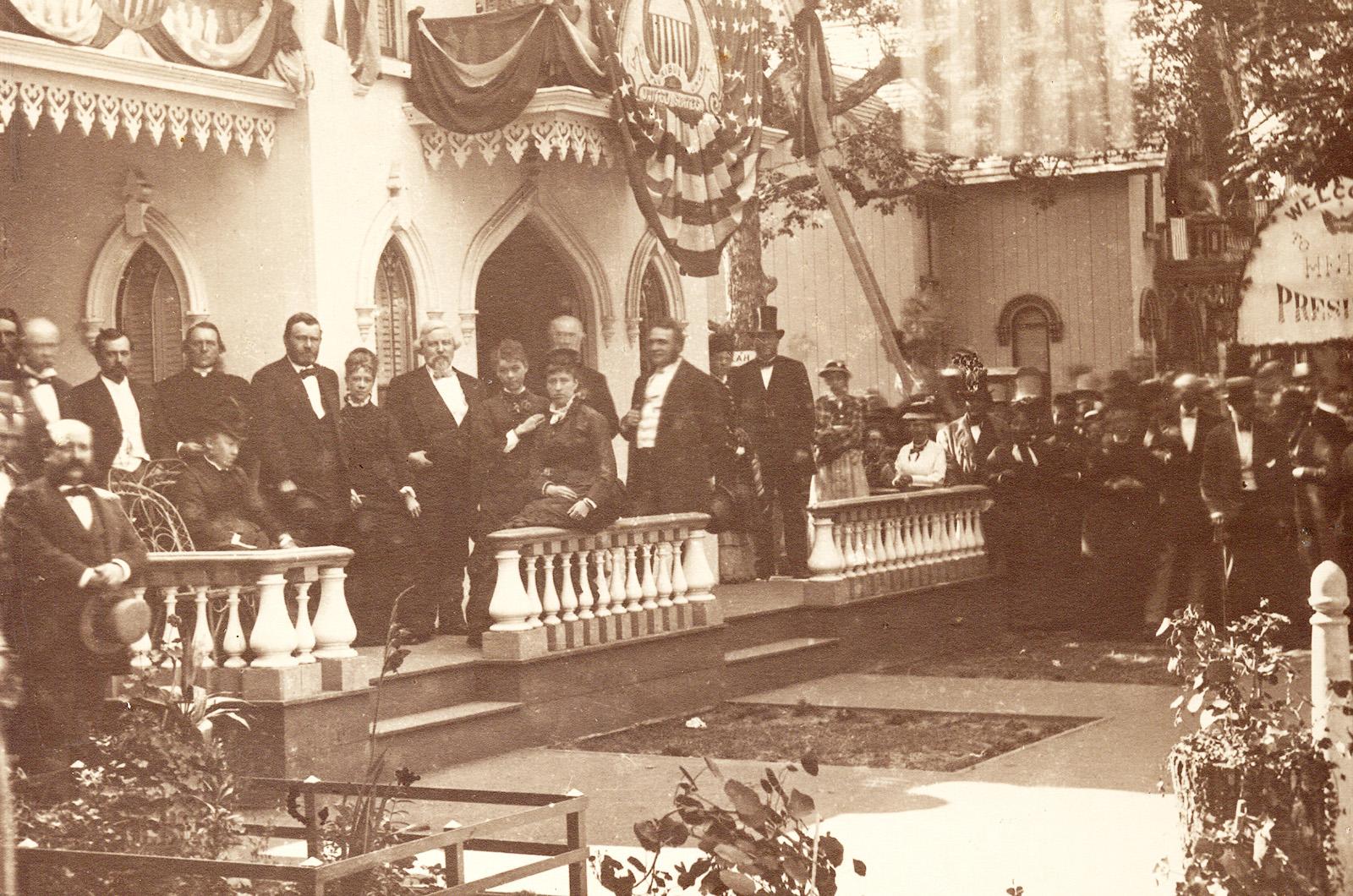From the June 14, 1940 edition of the Vineyard Gazette:
We are always interested in the destiny of the Island’s old houses, and it is worth comment that the once famous Dr. Tucker cottage in Oak Bluffs has now become the state police barracks. This cottage is not old as Vineyard dwellings go, but it had a great day of fame.
It was built in 1872 out of the profits of Dr. Tucker’s famous No. 59 remedy, a patent medicine prominent in the life of that day. The parlor — we quote from a contemporary source — had a ceiling of robin’s egg blue, and a cornice of Pompeiian red bordered with gilt. There were panels of terra cotta and light olive, and red and salmon were tints also employed. Perhaps this is sufficient to indicate the gaiety of the cottage when it was a showplace of the town.
When President Grant visited the Vineyard in 1874 he stayed at the Bishop Haven cottage on Clinton avenue, but in the evening he entered a carriage driven by a pair of noble black horses and drove behind the Foxboro brass band to the Dr. Tucker cottage. There, from a balcony, Grant had a good view of the fireworks in Ocean Park, A large wreath with the word “Peace” in the center illuminated in tribute to the president, and was considered extremely beautiful.
In 1877 General Joe Hooker was entertained at the Tucker cottage, and many other notables enjoyed the genial doctor’s hospitality as well. But all this is gone, and the once-sensational cottage has slipped into a long and largely unjustified eclipse. The summer life for which it was a symbol is no longer fashionable, and time has marched on beyond.
And yet we have a feeling that if the ghost of General Grant ever visits the Vineyard, as may well be any of these summer nights, it is pretty sure to show up at the Dr. Tucker cottage.
There can be but few people who are at all interested in landscapes who have not looked at a stand of wood and wondered what the scene might look like if the trees were removed and the ground smoothed over. Undoubtedly such conjectures have usually included the hope that this might not come to pass, since the view of a wood is one that usually excites admiration and inspires a thought that nature planned well when that particular bit of earth’s surface was concealed by trees.
But this is not always the case. In West Chop, the Mink Meadows Golf Club has accomplished something of this nature, producing a picture of such scenic attraction that a nature lover must admire the system employed in causing a meadow to bloom in the midst of a wood and to unveil views that were hitherto concealed by the foliage.
The golf course, which now comprises nine completed holes, is spread over fifty acres of new meadow, which is laid out in the form of a hollow square. Woods surround it, and woods fill the center of the square, so that in playing around the course, each side of the square presents a scene entirely separated from the others, about two miles in length, the square corners cutting off all view of the neighboring stretches.
There is much Island history attached to this spot that might well have been forgotten had this land remained in its wild state. In pre-Revolutionary times, the woods seem to have been as dense if not heavier, yet dotted with clearings of varying sizes. There is evidence in records and even in the soil itself of some sort of cultivation in ancient times. But nature has done its best to obliterate all traces of man’s occupancy and has succeeded admirably well.
Nevertheless, there are still to be seen the remains of the old earthworks, erected by Capt. Nathan Smith and his men during the Revolution. Designed to support the cannon that never arrived to defend the Vineyard Sound, these works were the only local preparations made, beyond the mustering of men, for the defense of the Vineyard, and serve as a reminder that the Vineyard became a neutral zone and that no warfare took place upon its soil.
The chain of three ponds, lying between the golf course and the Sound, presents another curious phenomenon. For the purpose of ascertaining whether or not they could be opened to the sea and thus turned into salt pools, a trench was dug along the line that appeared to offer the best location for this purpose. The diggers were startled to discover a wooden box buried in the earth, a long plank-sided affair, that eventually turned out to be a drain used for this very purpose. Although the wood appeared new and bright, it was established that this wooden drain must be at least seventy-five years old and that its purpose was to drain the cranberry bogs that lay around the ponds. Reopening this drain and allowing it to remain open will, if desired, salt all three of the ponds and allow a change in the water twice daily because of the flow of tides and of the springs which feed the ponds.
All this has come to light through the land clearing done by the club, and might otherwise have been lost in the dust of time.
Compiled by Hilary Wallcox
library@vineyardgazette.com




Comments
Comment policy »